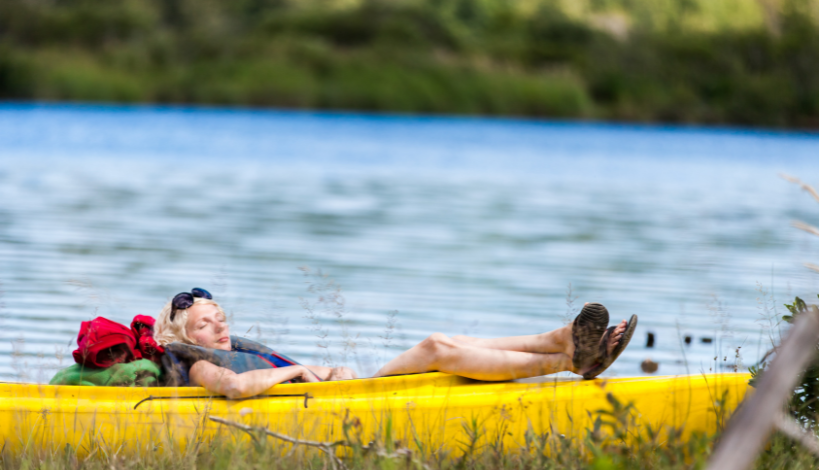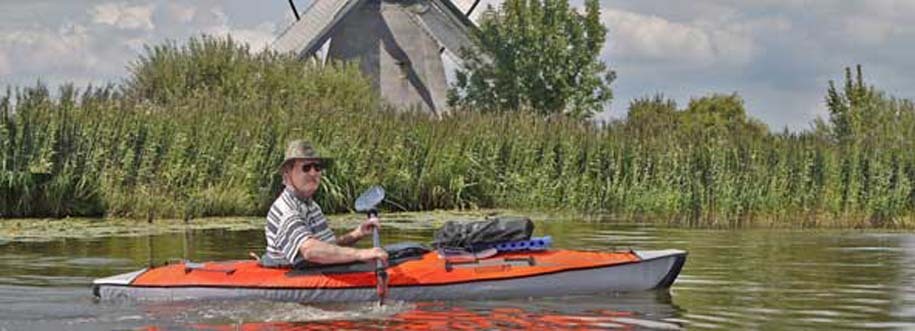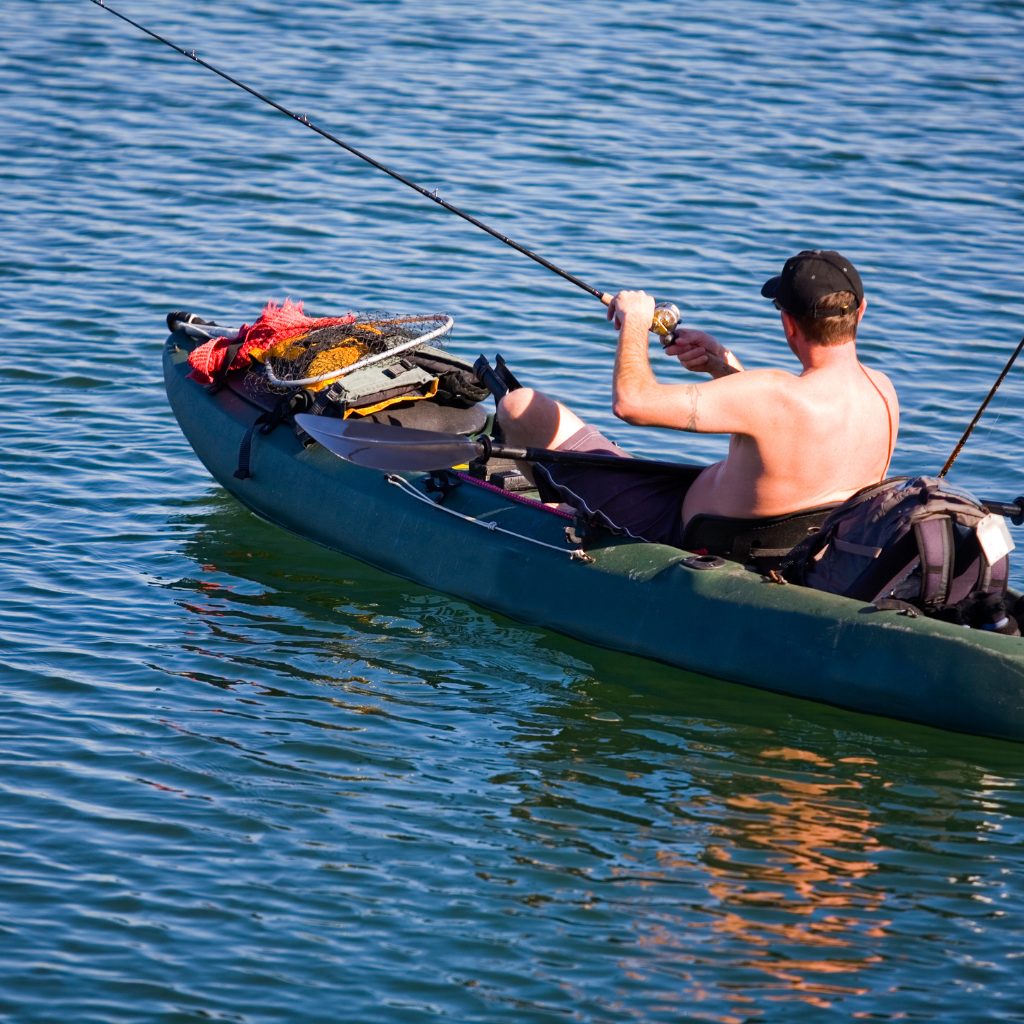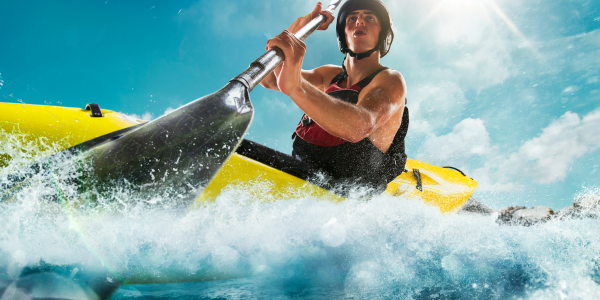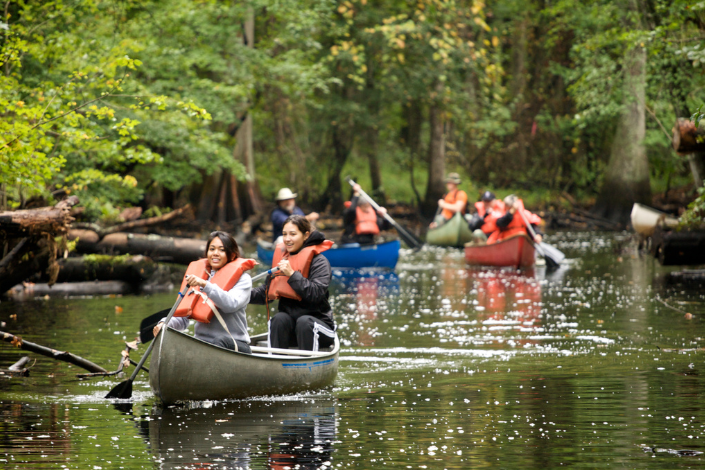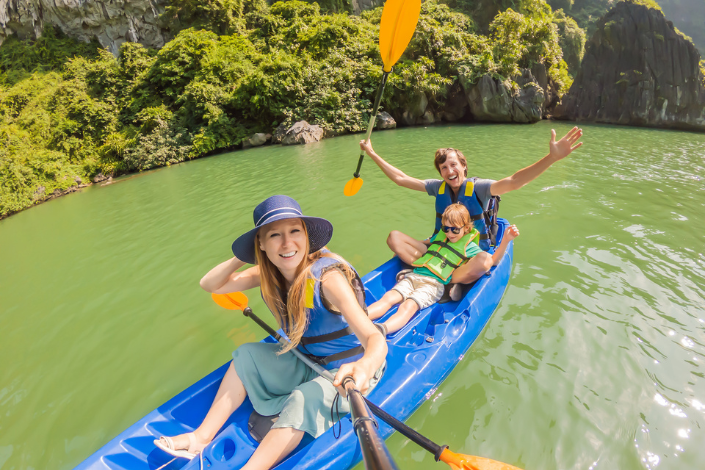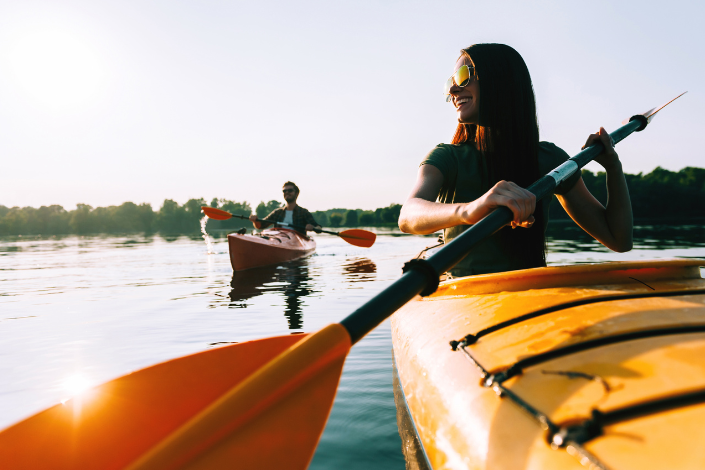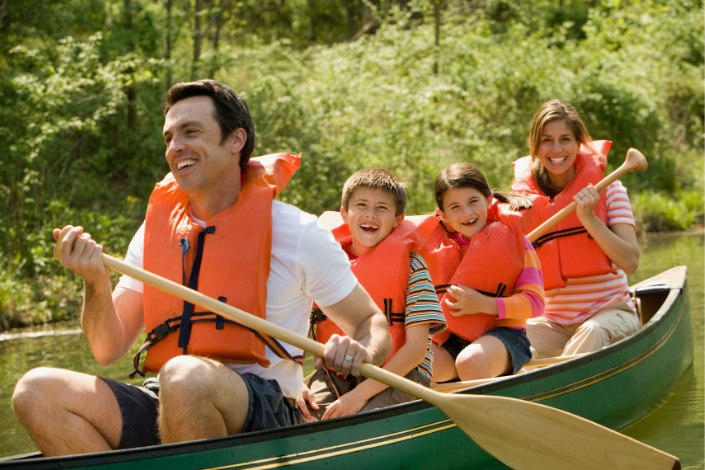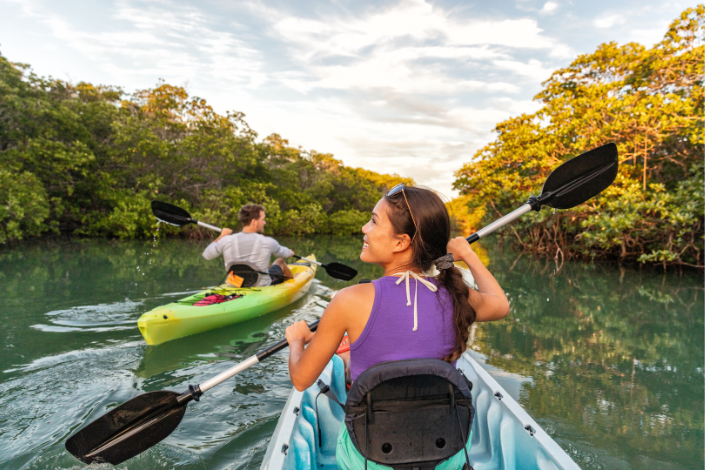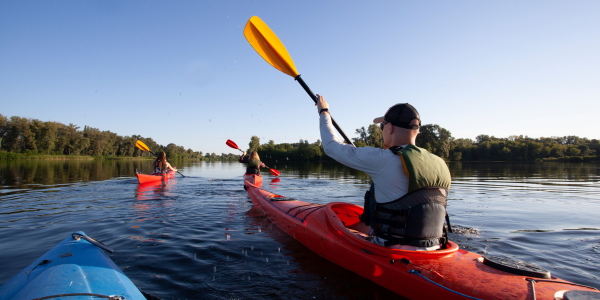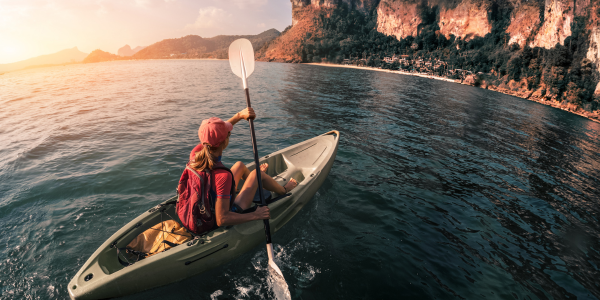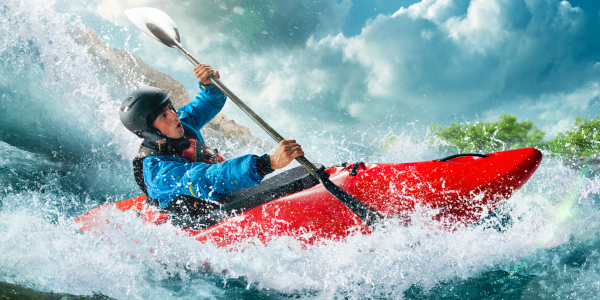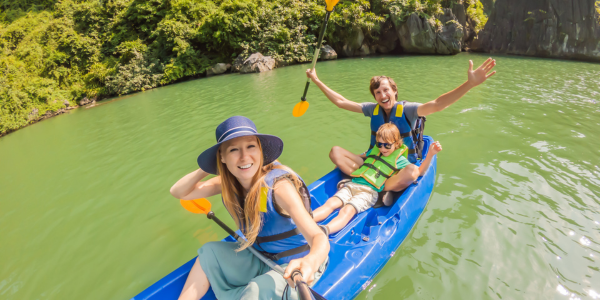Are you looking for a versatile paddle board that can convert into a kayak for a change of pace while on the water? Then you’ve come to the right place!
As an avid kayaker who also loves paddleboarding, when I discovered inflatable SUP and kayak hybrids, I was so excited!
I have researched, tested, and ranked 10 (out of 20) best inflatable SUP kayak hybrids on the current market, all of which are perfect for water activities such as leisure paddling, touring, and even fishing.
10 Best Inflatable SUP Kayak Hybrid Options

Each inflatable SUP kayak hybrid was tested during a 3 hour session in the water. This article will not only help you find the perfect inflatable paddle board and kayak hybrid, but also give you some key features to look for and some tips on how to choose the right one for you.
#1. Advanced Elements Hula 11

The Elements Hula 11 is one of the very first hybrids I bought and after years of using it, I can say that it’s one of the best ones designed for maximum stability and speed in flat water.
It features a rigid drop stitch construction, adjustable foot braces, and an inflatable seat with adjustable straps to help you find the most comfortable paddling position.
The Hula 11 also includes an aluminum frame paddle that can be adjusted to your preferred length.
#2. Bluefin Inflatable Combo Kit
The Bluefin SUP kayak combo kit has everything you need to make the most of the waterways. This paddle board measures 10ft x 33 inches when inflated and comes with a kayak seat and paddle that easily convert it into a kayak.
The paddleboard has a weight limit of 286 lbs, making it perfect for solo fishing and touring while the added versatility of a kayak is what makes it stand out as a hybrid.
The Bluefin is great for anyone who wants a hand-built, quality inflatable kayak SUP hybrid without breaking the bank.
#3. Bote Deus Aero Magnepod

The Bote Deus Aero inflatable hybrid is an ultimate high-performance deck for maximum surfing experience and paddling efficiency.
With its unique design and hard-shell composite construction, this hybrid is twice as rigid as a traditional iSUP and 20% lighter, allowing for effortless glide in any water.
Measuring 11ft x 32 inches when inflated, with a weight limit of 315 lbs, it is a great option for solo touring, surfing, and fishing. It also offers exceptional stability and tracking, with several accessory options available for more customization.
#4. Blue Water Toys Inflatable Crossover Stand Up Paddle Board/Kayak Kit
Another one of my absolute faves after spending a few hours on it: this kit is a great choice for anyone looking for an all-in-one solution.
This hybrid SUP kayak features a drop-stitch construction, making it extremely durable and rigid. The adjustable foot braces and inflatable seat provide added comfort while paddling in the kayak mode, while the high pressure pump allows you to inflate it quickly and easily.
Measuring 10ft x 30 inches when inflated, with a weight limit of 286 lbs, this hybrid is perfect for solo touring and fishing.
#5. DAMA Inflatable SUP/Kayak HybridThe DAMA inflatable SUP/kayak
The DAMA features a lightweight and stiff drop-stitch construction, with three adjustable fins, offering superior tracking in all directions. The padded seat and adjustable foot braces provide plenty of comfort while paddling in the kayak mode, and it also offers plenty of storage space for your gear.
Measuring 12ft x 32 inches when inflated and with a weight capacity of 330 lbs, this hybrid SUP/kayak is perfect for touring, fishing or leisure paddling.
#6. Roc Inflatable SUP/Kayak Hybrid
The Roc inflatable hybrid is great for those who want a combination of stability and maneuverability in all water conditions.
This hybrid features an adjustable paddle with two-piece construction, plus an adjustable seat and foot braces to help you find a comfortable position while kayaking. It also includes multiple D-rings for attaching accessories and additional storage space.
It measures at 11ft x 32 inches when inflated, offering a weight capacity of 315 lbs.
#7. Tidal King Combo
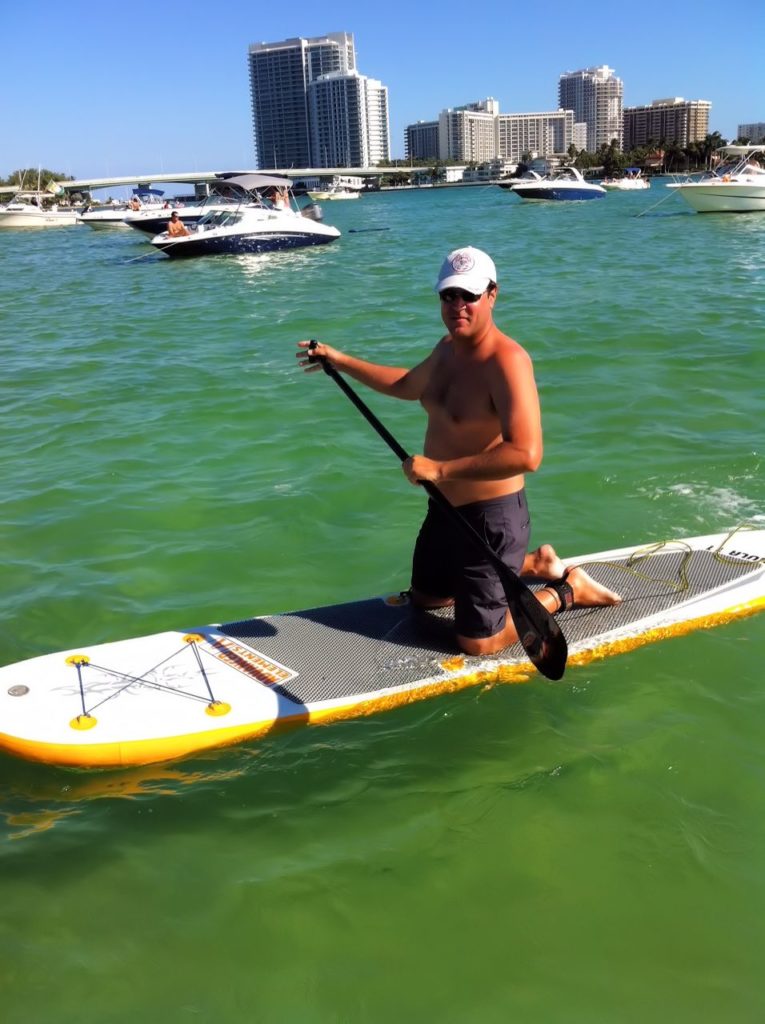
The Tidal King hybrid features a stiff and durable drop stitch construction, plus two adjustable fins to provide superior tracking in all conditions.
The adjustable seat and foot braces offer plenty of comfort while kayaking, and it also includes plenty of storage space for your gear.
Measuring 10ft x 33 inches when inflated and with a weight capacity of 330 lbs, the Tidal King is perfect for touring, fishing, or leisure paddling.
#8. Isle Airtech
Admittedly, I wasn’t too excited testing this one out and looking back, I have no idea why because it turned out to be another new favorite hybrid option!
This hybrid features an ultra-light and rigid drop stitch construction, plus adjustable fins to help with tracking in all directions.
It includes an adjustable seat and foot braces for comfort while kayaking, and it also has plenty of storage space for all your gear.
Measuring 11ft x 32 inches when inflated, the Isle Airtech offers a weight capacity of 315 lbs.
#9. Freein Hybrid
The Freein comes with adjustable fins to help with tracking in all conditions. It also includes an adjustable seat and foot braces for added comfort while kayaking, and it has plenty of storage space for all your gear.
Measuring 10ft x 33 inches when inflated and with a weight capacity of 330 lbs and is perfect for most occasions.
#10. Upwell
The Upwell is all about performance and convenience. This SUP features an ultra-light and rigid drop stitch construction, plus adjustable fins to maximize tracking in all directions.
It also includes an adjustable seat and foot braces for added comfort while kayaking, and it has plenty of storage space for all your gear.
Measuring 11ft x 30 inches when inflated and with a weight capacity of 450 lbs, the Upwell is perfect for solo touring and fishing.
Are Inflatable Hybrid Paddle Boards Any Good?

Yes, inflatable hybrid paddle boards can be a great choice for anyone looking for an all-around watercraft that offers performance and convenience. I love all the ones I ended up recommending here.
These inflatable options are typically lightweight and rigid, offering amazing tracking in all directions. Many hybrids also include adjustable seats and foot braces for added comfort while kayaking, as well as plenty of storage space for your gear.
How Long Does It Take to Inflate and Deflate a SUP and Kayak Hybrid?
It typically takes around 10-15 minutes to inflate and deflate a hybrid SUP/kayak, depending on the size and type of pump used.
For larger boards, an electric pump is recommended which can usually inflate the board in 5-7 minutes. Deflating usually only takes a few minutes.
Can I Use My Hybrid for Surfing?
Yes, some hybrids are designed to offer good performance for surfing.
When shopping for a hybrid paddle board and kayak, I advise you to look for features like adjustable fins, stiff drop stitch construction and a weight capacity of at least 315 lbs.
These features will ensure that the board is both light and rigid enough to provide an enjoyable surfing experience.
Can I Use My Hybrid for Fishing?
Yes, many hybrids are designed to offer great performance and features for fishing.
Look for models with additional storage space, adjustable seats and foot braces, as well as multiple D-rings for attaching accessories.
Can I Use My Hybrid in Whitewater?
No, most hybrids are not designed to handle whitewater conditions.
If you plan on using your hybrid in whitewater, look for a model specifically designed for this type of environment. These models typically feature additional features such as reinforced hulls and adjustable fins to ensure maximum performance and safety in whitewater conditions.
I would do my due diligence when researching an inflatable SUP and kayak hybrid for whitewater kayaking.
Can I Use My Hybrid for Touring?
Yes, most hybrids can handle some of the demands that a touring kayak requires.
For this, look for models with adjustable fins, stiff drop stitch construction, and a weight capacity of at least 330lbs.
Can I Use My SUP and Kayak Inflatable Hybrid on Longer Trips?
Yes, many hybrids are designed to offer excellent performance and features for longer trips. Look for models with additional storage space, adjustable seats and foot braces, plus multiple D-rings for attaching accessories. These features will ensure that your hybrid is ready to tackle any extended paddling adventure.
Can I Use it in the Ocean?
Yes, you can use your hybrid in the ocean. Look for models with adjustable fins, stiff drop stitch construction and a weight capacity of at least 315 lbs.
Can I Use My Hybrid in Rivers and Lakes?
Yes, many hybrids are designed to offer excellent performance and features for rivers and lakes.
Can I Use My Hybrid for Tandem Paddling?
Yes, but you need to buy a SUP inflatable kayak hybrid that is designed for tandem paddling. Pay special attention to weight capacity.
In Summary
Finding the right inflatable SUP and kayak hybrid for your needs can feel a bit daunting but after having tested 20 of these babies for 3 hours each (that’s 60 hours of research!), the ones that made in the top 10 are absolutely some of the best ones on the market.
For hardshell hybrid options as well, check out the other article I recently published.

